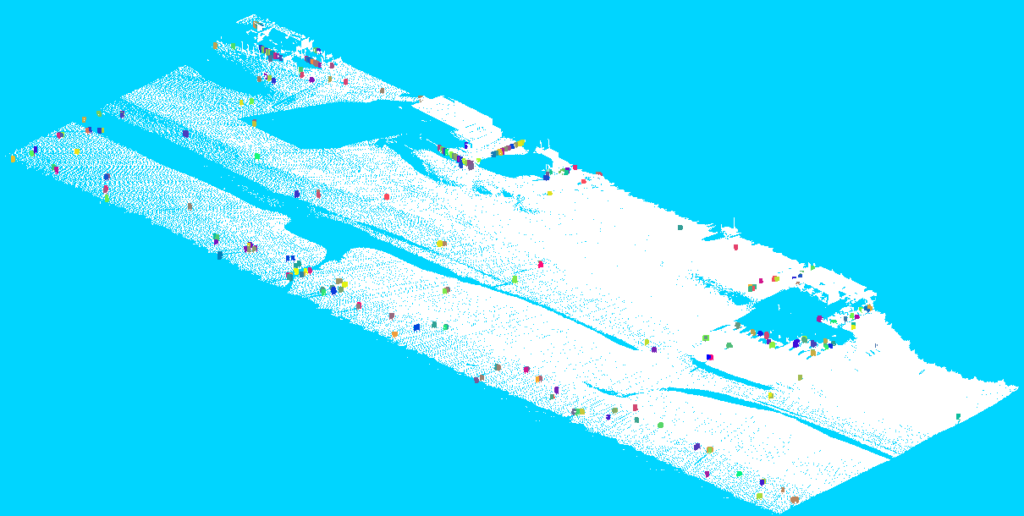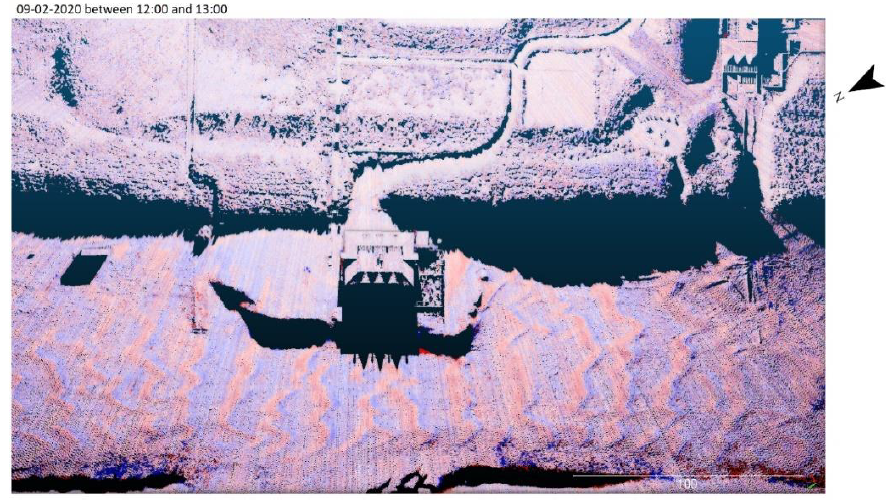For the course 3D surveying of civil and offshore infrastructure at TU Delft a group of students has worked on counting the people that are walking on the beach using our CoastScan data from Noordwijk. In their final report they present their method that is able to detect up to 90% of the people that are walking on the beach in an area of about 400 m length in front of the laser scanner.

Point cloud of the beach in Noordwijk with people detected by the algorithm marked in colors.

